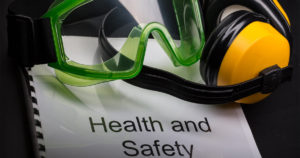Seven Important Safety Tips for Face and Eye Protection at Work
January 15, 2020 According to the Bureau of Labor Statistics (BLS), more than 20,000 workplace eye injuries happen every year. Despite the fact that the Occupational Safety and Health Administration (OSHA) requires employers to implement a variety control methods in order to protect employees from exposure to eye and face hazards, injuries – some fatal – continue to occur.
According to the Bureau of Labor Statistics (BLS), more than 20,000 workplace eye injuries happen every year. Despite the fact that the Occupational Safety and Health Administration (OSHA) requires employers to implement a variety control methods in order to protect employees from exposure to eye and face hazards, injuries – some fatal – continue to occur.
Eye and Face Injuries: General Data
There are many different types of face and eye injuries, and they range from mild to severe. Some injuries result in permanent blindness, while others may result in varying degrees of vision loss. Some of the most common eye and face hazards are:
- Molten metals,
- Flying particles,
- Liquid chemicals,
- Acids,
- Caustic liquids,
- Injurious light radiation, and:
- Chemical gases or vapors
According to the Vision Council, men between the ages 25-44 account for 80% of all workplace eye injuries. Nearly half of all eye injuries happen in the construction, manufacturing, and mining industries. Additionally, eye injuries make up almost half of all head injuries that lead to workers missing days.
Eye and Face Protection Safety Tips
The majority of eye and face injuries in the workplace are preventable, but only if an employer stays up to code, values employee safety, and complies with OSHA’s federal standards. Safety and Health magazine says there are seven key considerations when it comes to guarding a worker’s eyes and face from hazards. One of the most important ones is personal protective equipment, which is also commonly referred to as PPE.
According to OSHA, an absence of proper personal protective equipment was one of the most frequently cited standards in 2018 and 2019. PPE guards employees from known hazards and is known to drastically reduce injury rates. Safety goggles and face shields are just two examples of personal protective eye and face equipment. Not only do employers need to make sure employees have the proper personal protective equipment for the job, but anytime flying objects are present they must also provide side protectors (these guard the area between the ear and eye), like slide-on side or clip-on shields.
Another important safety and health consideration is to keep an eye out for hidden hazards. Lots of employees may perform repetitive tasks every day — but every so often these workers must also perform tasks that come with a different set of hazards. Before diving in, Safety and Health recommends that the worker “pauses and rethinks the situation and what PPE is appropriate” for the new task at hand.
Employers need to stay up to date on OSHA’s eye and face protection standards. The agency’s current standard is known as the Occupational and Educational Personal Eye and Face Protection Devices. The standard details the five most common hazards (impact, dust, chemical, heat, and optical radiation) and provides effective ways for employers to guard against them. Some other key considerations from Safety and Health include remembering that prescription eyewear is not protective eyewear and that personal protective equipment should always be comfortable and fit the user well. Ill-fitting PPE is not secure, and leaves workers vulnerable toface and eye injuries.
It is critical that workers do not remove their face and eye PPE before the job is done and they are leaving the workspace. Simply put, personal protective equipment should ONLY come off when the hazards are no longer present. If a worker is using a protective face shield and has been exposed to dust or debris, he or she should wipe the top of the hard hat where it meets the shield before flipping it up and safely removing it. This will help prevent dust and debris from entering the eye.
Lastly, personal protective equipment must always be properly stored and cleaned. When PPE is stored or cleaned improperly, it adversely affects the equipment’s lifespan and efficacy. The proper way to handle PPE is:
- Store in a clean and sanitary location, away from extreme temperatures. Extreme temperatures include storage in vehicles, and:
- Clean according to the manufacturer’s guidelines and instructions. And, remember to disinfect protectors before sharing them between workers.
If you sustained eye or face injuries at work and would like to speak with an attorney about the possibility of filing a workers’ compensation claim, someone at our firm can help. Workers’ compensation is a type of insurance that provides wage replacement and medical benefits to employees who were injured as a result of their employer’s safety and health failures. If you would like to learn more, please contact a representative directly.
Philadelphia Workers’ Compensation Lawyers at Galfand Berger, LLP Represent Individuals Injured at Work
Galfand Berger has offices located in Philadelphia, Bethlehem, Lancaster, and Reading we serve clients throughout Pennsylvania and New Jersey. To schedule a consultation, call us at 800-222-8792 or complete our online contact form.
 Google Screened
Google Screened
